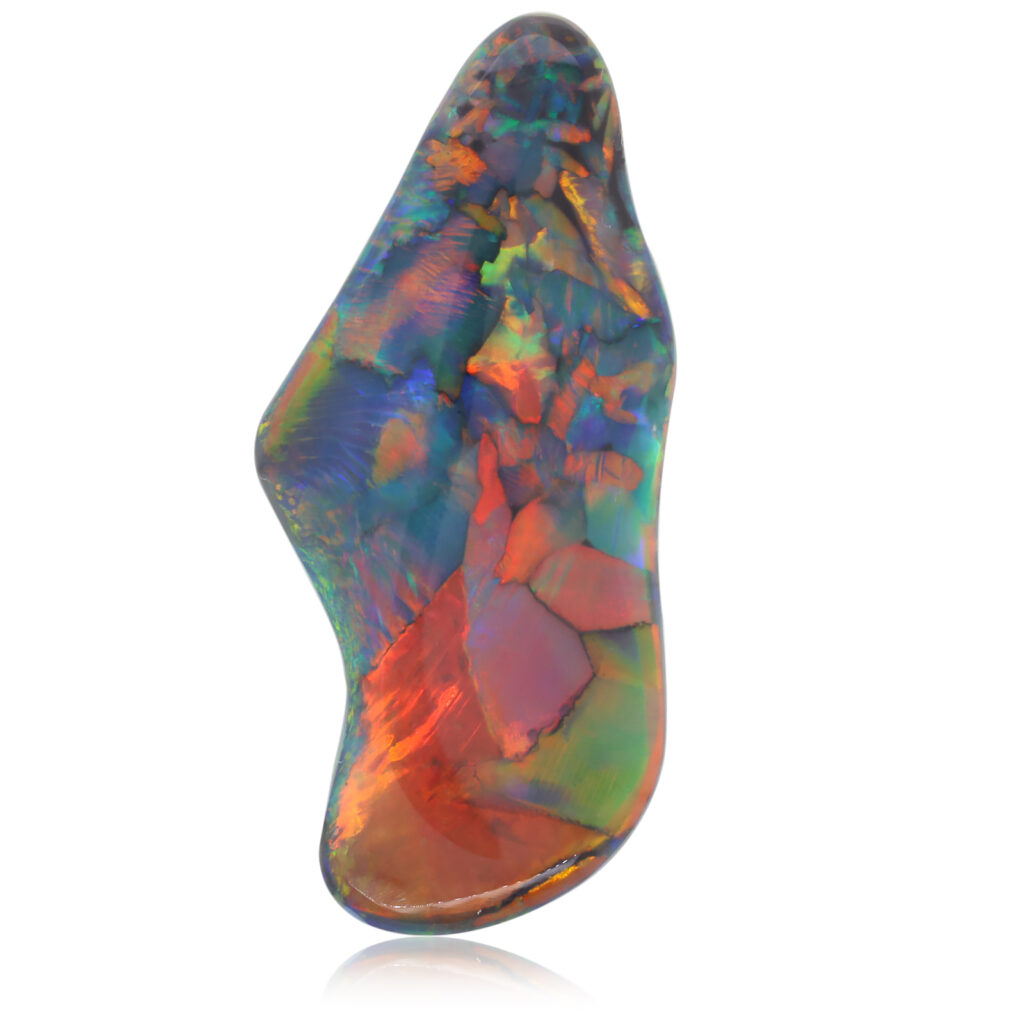So, you’ve fallen in love with Australian Opal, and want one for your self, but you’re a little confused as to how some opals are worth more?
Let’s break down, in simplified terms, how Australian Opal is valued.
It comes down to these factors; Rarity (opal type), Colour, Brightness, Clarity, Pattern, and Carat weight.
Rarity – or Opal Type. We have four main types of Opal in Australia. Black Opal (generally from Lightning Ridge, NSW), Boulder Opal (Queensland opal, from Winton, Opalton, Quilpie, Yowah, Koroit and more), Crystal Opal (generally from the South Australian fields such as Coober Pedy, Andamooka, Mintabie, and Lambina, but can be from Lightning Ridge, White Cliffs (NSW), and in some cases, the Queensland fields), and White (Milky) Opal from Coober Pedy (South Australia).
Semi-Black is also an opal type, but we’ll put them in with the Black (or Dark) Opal for this case.
Black Opal is the rarest of the opal types, followed by Boulder Opal, Crystal Opal, and lastly, White (Milky) Opal.
Therefore, in value, Blacks are more valuable, White is the least.
Colour – don’t confuse this with body tone (black/grey/white). We’re talking the impressive rainbow hues here. Red is the rarest of the colours, followed by Orange, Green, Blue, then Purple, simply speaking. Of course there’s colours in between (pinks, yellows, aquas etc).
So, now add that to the Opal Type. Black Opal with Red in it would be a rare and valuable combination. A Crystal Opal with Purple in it would be a common and inexpensive piece.

Here’s the tricky part – White Opal can throw a spanner in the works. With White Opal, Pinks/Yellows generally occur more frequently. So instead, White/Milky Opal tends to get its value more from Brightness, Clarity and Pattern.
Brightness – pretty simple, really. The brighter the stone, the higher the value. The better the formation of the opal (hydrated silica), the brighter the stone will be. Opal is a naturally-formed prism, and therefore works using diffraction of light. The tighter the formation of the opal, the more intense the diffraction/brightness, the higher the value.
In our profile pages, we will register a stone as being either subdued, bright or brilliant. A subdued stone will show less colour/brightness, particularly when taken out of direct light. A brilliant stone will look almost luminescent.
So to add to our example, a Brilliant, Black opal with red hues will be the most valued.
Clarity – the display or lack of natural inclusions. The cleaner the ‘face’ of the opal, the higher the value. Natural inclusions will be potch (common opal), sandstone, or in the case of Boulder Opal, ironstone spots.
Again, with our example, a brilliant, Black Opal, with red, and a clean face with no inclusions, will be the most valued.
Pattern – this is THE FUN ONE. Opal is so random, and a combination of patterns can form in any one stone. Some patterns are rare and highly sought after (ie Harlequin, Flagstone, Chinese Writing), whereas a Floral, Pinfire or Grass pattern will be more common.
Using the example – a brilliant, Black Opal, with red, a clean face with no inclusions, and a Harlequin pattern, will be the most valuable.
And lastly, carat. This is a form of weight. A carat equals one fifth of a gram, and is used as the form of measurement for gemstones. An opal will be given a (field or miner’s) price per carat based on the above mentioned factors, then multiplied by the opal’s carat weight.
So, theoretically-speaking, if a Black Opal with a red/blue/green colour combination, Harlequin pattern, clean face, and is bright, and has a (field) value of $1,500 per carat, and weighs 3.6 carats, it would have a value of $5,400.
It’s a lot to take in, and we always say, you should choose the opal that ‘speaks’ to you, not just because it has a certain monetary value to it.

